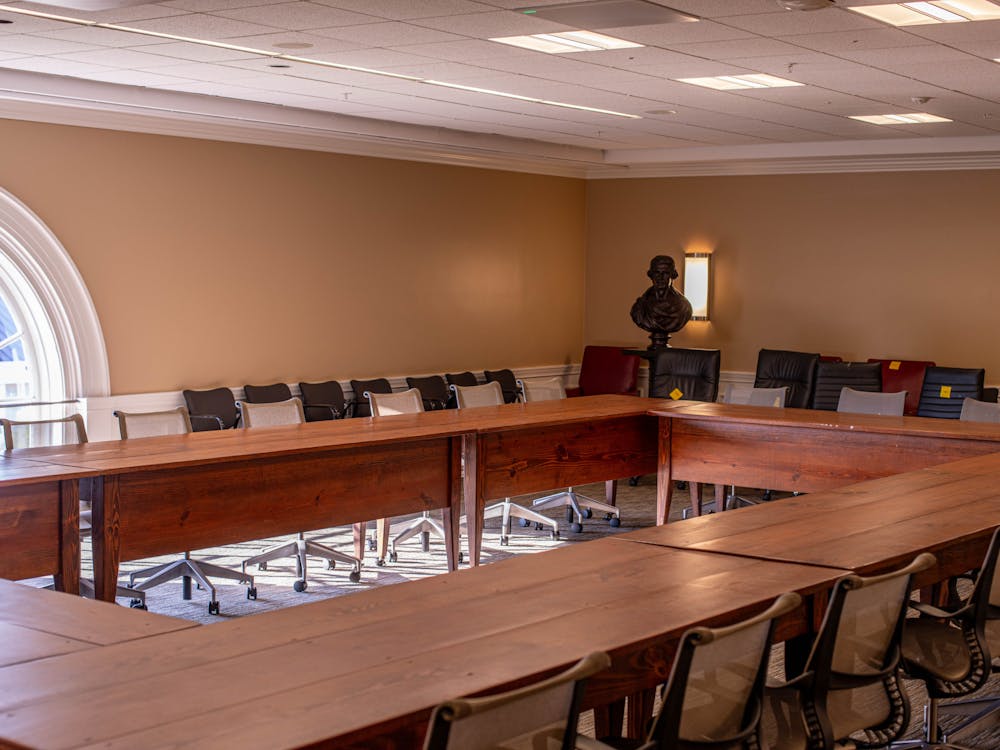University research efforts, which are often cosponsored by companies, received about $315 million from outside sources last year, about 10 percent of which came from industry sources, said Pace Lochte, economic director for the University. University researchers participate in many partnerships with private companies, which arise in a number of ways.
Researchers are often contacted by companies after they have published an article in a scholarly journal or presented their work at a conference, Assoc. Radiology Prof. Frederick Epstein said. He also noted that University professors know many people in their fields at other universities and in their respective industries, and much of the interaction between companies and university researchers comes about from making contacts in their fields.
“Relationships are formed either by the industry looking for particular expertise or when U.Va. faculty approach people in the industry and ask whether they would be interested in supporting [their research],” he said, noting that the collaboration occurs in areas where mutually beneficial relationships can be formed.
The relationship between the research conducted and the products created or enhanced is “translational in nature,” allowing the research to be applied to a problem that the company is interested in solving, Lochte said.
“Faculty members are conducting basic research and oftentimes that will have an application in the real world,” Lochte said. “The closer it is to application, the more interested companies are.”
The collaboration between University researchers and outside companies has multiple benefits for both the University and the company, Lochte said.
“It’s a source of funding [for research] when federal funding [for research] has really flattened,” Lochte said, noting that “universities are looking for other sources of funding,” including industry sources.
Additionally, students working in faculty members’ labs who choose to work with outside companies have the opportunity to learn about commercial research, Lochte noted.
When a private company contracts with a researcher, the contract must go through the Office of Sponsored Programs, which helps to negotiate the terms of the agreement, Lochte said. She noted that this type of collaboration has the potential to lead to conflicts of interest, which is something the office seeks to avoid.
David Hudson, associate vice president for research, added that reporting these potential conflicts of interest allows the University to manage and avoid such occurrences.
“Science should be free of biases and influences,” Hudson said. “The University recognizes that public trust [vested in scientific research,] and it’s important that we pay careful attention to these matters. We cherish that public trust and are eager to ensure that we disclose financial interests that might lead to conflicts of interest and deal with those properly.”
Hudson added that a commonwealth statute requires researchers to report when they receive three-percent equity or $10,000 or more of revenue from the company with which they are working. The University Medical School changed its policy this year so that researchers must report any income they receive from companies with which they are collaborating, he said, noting that the University is considering revising its broader policy as well, taking the Medical School’s new policy as a test case. He noted that the University will likely not make any changes before next semester, however, to allow time for University officials to fully review the policy.
Epstein, who has worked with Siemens Medical Solutions for the past eight years to develop new ways to perform magnetic resolution imaging, noted that while problems such as conflict of interest can arise from these relationships, he believes the positive aspects outweigh the negative, noting the financial support researchers receive as a result.
“The University has gotten much better in understanding what industry needs are and responding to them than we were 10 to 15 years ago,” Lochte said, adding that companies need the research done at universities in order to “grow, adapt and be forward in their research in product development.”
“There are lots of opportunities for both the University and companies and the citizens of the commonwealth coming from these partnerships, and I think we’re still finding new ways to work together that can make each group successful,” Lochte said.
Dianna Kenneally, principal scientist in the scientific communications department of Procter & Gamble, said collaborating with universities is key to getting research done quickly and efficiently.
“P&G has had a strategy for many years of working with the best academic researchers in their fields,” Kenneally said. Science is moving so quickly today, she explained, that it is important to seek out researchers who already have a good deal of experience in areas of interest for the company.
“It’s much more efficient for us to use and leverage expertise that already exists ... than to recreate the expertise from scratch,” she said.
Kenneally cited a recent cold study in which Procter & Gamble collaborated with the University’s Pediatrics Prof. Ronald Turner as an example of the type of relationship the company strives to develop with academic researchers.
“We had a long-standing relationship with Dr. Turner in terms of doing cold research,” Kenneally said. “He is looked at as a leader in this area of research.”
As for any intellectual property issues that arise from collaborating with outside companies, Lochte said, they are handled by the University Patent Foundation. The University’s policy is that any product invented by a University student, faculty or staff member is the intellectual property of the University, Lochte said.
If any revenue is generated from patenting these inventions, royalties are paid to the University. These in turn are distributed among various programs at the University according to the amount of money generated by the product, Lochte said.






